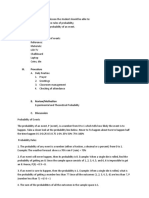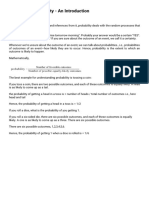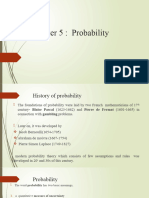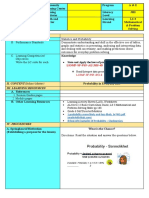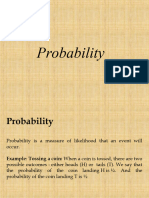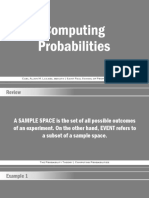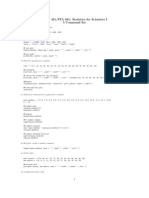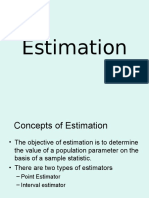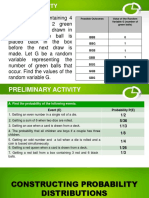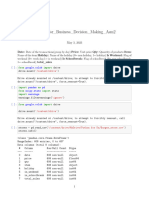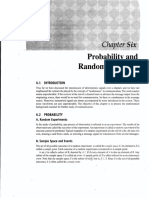0% found this document useful (0 votes)
7 views5 pagesTopic Probability
Probability measures the likelihood of an event occurring, ranging from 0 (impossible) to 1 (certain), calculated as favorable outcomes divided by total outcomes. Key concepts include experiments, outcomes, sample spaces, and events, with rules for addition and multiplication of probabilities for mutually exclusive and independent events. The document also provides various probability problems and examples, illustrating concepts such as expected outcomes and conditional probability.
Uploaded by
nazmaalam82Copyright
© © All Rights Reserved
We take content rights seriously. If you suspect this is your content, claim it here.
Available Formats
Download as PDF, TXT or read online on Scribd
0% found this document useful (0 votes)
7 views5 pagesTopic Probability
Probability measures the likelihood of an event occurring, ranging from 0 (impossible) to 1 (certain), calculated as favorable outcomes divided by total outcomes. Key concepts include experiments, outcomes, sample spaces, and events, with rules for addition and multiplication of probabilities for mutually exclusive and independent events. The document also provides various probability problems and examples, illustrating concepts such as expected outcomes and conditional probability.
Uploaded by
nazmaalam82Copyright
© © All Rights Reserved
We take content rights seriously. If you suspect this is your content, claim it here.
Available Formats
Download as PDF, TXT or read online on Scribd
/ 5


